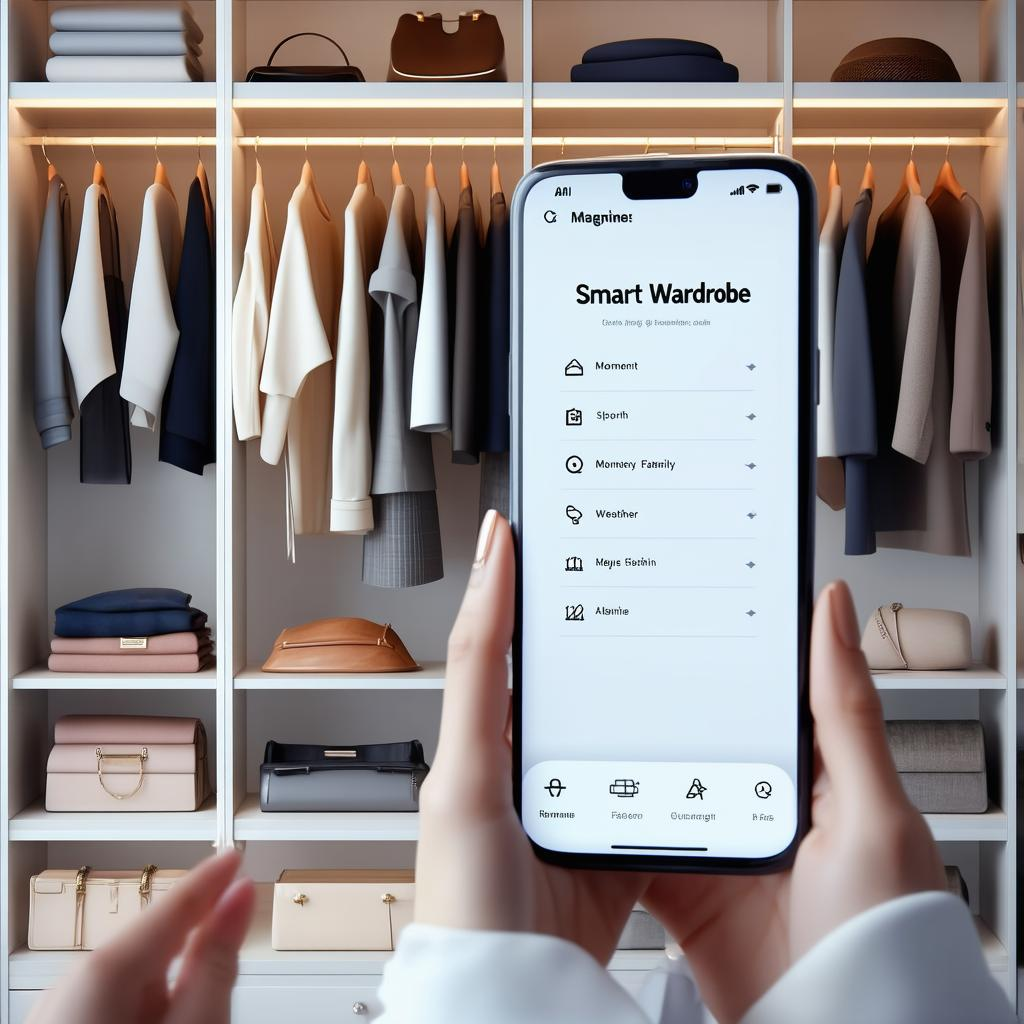Eco-Friendly Beauty Tech: Sustainable Skincare Tools for 2025
In 2025, “eco-friendly” isn’t just another buzzword—it’s woven into the fabric of our daily habits, including our beloved beauty routines. As someone who once assumed “going green” meant just avoiding a few harsh chemicals, I’ve discovered there’s far more to it. From solar-charged facial brushes to water-saving cleansing gadgets, eco-friendly beauty tech is reshaping how we pamper ourselves. Let’s explore these innovations and see how environmental responsibility can coexist with cutting-edge skincare science.
1. Why Green Beauty Devices Are Booming
The conversation around sustainability, carbon footprints, and waste reduction has moved mainstream. Platforms like TikTok and Instagram overflow with eco-conscious tips, while many consumers hold brands accountable for unethical or unsustainable manufacturing. According to a 2024 Sustainability in Cosmetics & Skincare study, about 68% of shoppers in North America and Europe prefer buying from companies that show tangible eco-friendly initiatives. This surge in demand has forced the beauty industry to update its game. Gone are the days of merely slapping “organic” on a label—genuine sustainability now encompasses energy use, supply-chain ethics, and end-of-life disposal for products and gadgets.
2. What Defines an Eco-Friendly Skincare Gadget
Not every product claiming to be “green” actually is. Truly eco-friendly gadgets usually boast several or all of the following traits:
- Minimal Energy Consumption: May rely on solar power, rechargeable batteries, or more efficient electronics.
Example: A low-wattage LED mask that maintains powerful light therapy at a fraction of the usual electricity.
- Sustainable Materials: Includes bamboo, reclaimed metal, or post-consumer recycled plastics.
Example: Cleansing handles carved from responsibly harvested wood, ensuring less plastic waste.
- Lower Water Usage: Either uses very little water in manufacturing or operation.
Example: Waterless cleansing tools that only need a small mist or natural facial moisture to activate.
- Responsible Supply Chain: Upholds fair labor standards and green shipping, shrinking overall carbon impact.
Example: Brands shipping with compostable mailers and offsetting carbon emissions.
- Reduced Waste: Offers refillable parts or compostable packaging so you don’t toss everything after a few uses.
Example: A cleansing device with silicone bristles you can replace instead of discarding the entire gadget.
3. Top Tools for 2025
Below, we explore some of the most buzzworthy eco-friendly gadgets that are changing skincare as we know it. Each addresses different beauty concerns, from dullness to breakouts, all while cutting down on waste and resource consumption.
Solar-Powered Facial Brushes
- Core Concept: Tiny solar panels charge an internal battery, saving you from disposable batteries or frequent electrical outlets.
- Green Perks: Energy that’s literally free and renewable, plus many brands use recyclable bristles.
- Latest Developments: According to Green Tech Skincare Weekly, new panels are more efficient in cloudy climates, making these brushes practical even for less sunny regions.
Low-Energy LED Masks
- Purpose: LED therapy can target wrinkles, acne, or uneven tone.
- Eco Twist: Modern models use power-sipping diodes and biodegradable plastic components. Some come with hemp or organic cotton straps.
- My Take: I tried a next-gen LED mask recently and was impressed by how light it felt. Gone are the days of “robotic” helmets.
Waterless Cleansing Tools
- Principle: Operate without traditional rinsing. Instead, they might use powders that turn into a foam with minimal moisture.
- Why It’s Vital: With rising concerns about water scarcity, each drop we save helps.
- Example: A device that uses under a cup of water per week, perfect for drought-prone areas.
Refillable Packaging
- Description: Not a traditional device but a major step in sustainability. Refillable containers reduce single-use plastic.
- Eco-Smart Additions: Some brands integrate chips that track product usage, letting you reorder just in time.
- Big Picture: Cutting plastic waste is monumental. Even a small dent in overall packaging helps curb landfill buildup.
4. My Journey with Green Beauty Gadgets
A couple of years back, I was a walking advertisement for wasteful beauty consumption. Single-use sheet masks, half-empty bottles, and enough packaging to build a life-size cardboard fort. The turning point arrived when I moved apartments and realized how many garbage bags filled with product scraps I’d accumulated.
That shock spurred my search for eco-friendly beauty tech. My first purchase was a solar-powered cleansing brush. I half-expected it to break in a week. But it’s still going strong after eight months, needing only a window seat in the sun to recharge. This eye-opening success prompted me to try low-energy LED masks, refillable serum bottles, and waterless cleansing balms. Each swap, though small, has chipped away at the eco-guilt I used to feel whenever I opened yet another plastic-wrapped face mask.
5. Material Choices for Earth-Conscious Devices
A crucial aspect of sustainable beauty tech revolves around what the device is made of. Here are popular material picks that tread lightly on our planet:
- Recycled Plastics: Collected from consumer waste or reclaimed ocean debris, cutting reliance on new petroleum-based materials.
- Bioplastics: Plant-based polymers that may degrade faster than standard plastic. Check if they’re home compostable or need special facilities.
- Durable Metals: Stainless steel or aluminum, often recycled. Can be repurposed countless times.
- Wood and Bamboo: Renewable resources that lend a natural, upscale feel. Look for FSC-certified wood for responsible forestry.
- Compostable Packaging: Cornstarch-based foams or mushroom-based plastics that break down in the right conditions. Some even contain embedded seeds for planting.
6. Tips for Maximizing Eco-Friendly Tools
After snagging that solar brush or refillable serum container, how do you ensure it truly delivers on its promise?
- Charge Correctly: Solar-powered? Place it by a sunny window. For low-energy LED masks, unplug once charged to avoid draining power.
- Clean Gently: Harsh detergents corrode delicate parts. Opt for biodegradable cleansers.
- Store Properly: Damp bathrooms can breed mold. Keep devices in a cool, dry environment.
- Use As Directed: Overuse may harm the device and won’t necessarily speed up results.
- Repair, Don’t Replace: See if the brand offers repairs or spare parts before tossing the gadget entirely.
7. Q&A: Common Concerns
Q1: Are eco-friendly tools too costly?
They can be pricier upfront, but they also tend to last longer. You’re investing in durability and resource savings—often balancing out the expense over time.
Q2: Will solar-powered devices work in cloudy areas?
Modern solar panels can harvest energy from indoor lights or partial sun. In extremely overcast zones, opt for dual-power models with USB charging backup.
Q3: Are waterless products sanitary?
If properly formulated, yes. Dry-based cleansers often have antimicrobial agents. Always follow instructions and watch for off odors or textures.
Q4: Can I compost all packaging at home?
Some materials require industrial composting. Check labels or brand websites to confirm.
Q5: What if my device breaks?
Many companies have repair or return policies. If it’s beyond repair, look into local e-waste recycling centers.
8. Looking Ahead
The push for greener beauty tech is only gaining speed. Experts anticipate more automation—imagine AI-enabled brushes that read your skin’s moisture—along with new energy sources like body-heat power. Big beauty brands are teaming up with eco-centric startups, combining their broad distribution with nimble innovations.
In other words, what seems futuristic now may be standard in just a year or two.
9. Conclusion & Next Steps
Switching to eco-friendly beauty tech isn’t just about snagging a new gadget; it’s a lifestyle choice that resonates with a more conscientious approach to beauty. By leaning on sustainability, we shape a market where every player—from product designers to shipping coordinators—rethinks how to minimize environmental harm.
If you’re new to this realm, try swapping a single product first. Perhaps you replace your traditional battery device with a refillable or solar-powered version. Then, share your experience—awareness begets more action. Small, consistent steps could steer the beauty industry into a future that’s as gentle on the Earth as it is on our skin.




